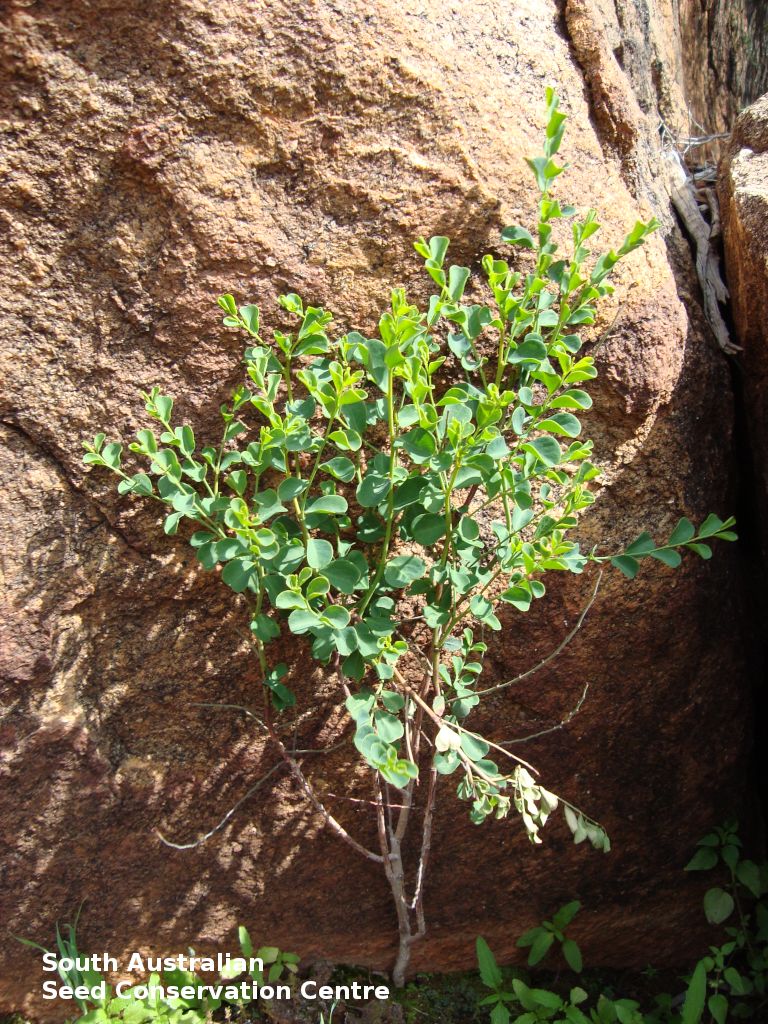
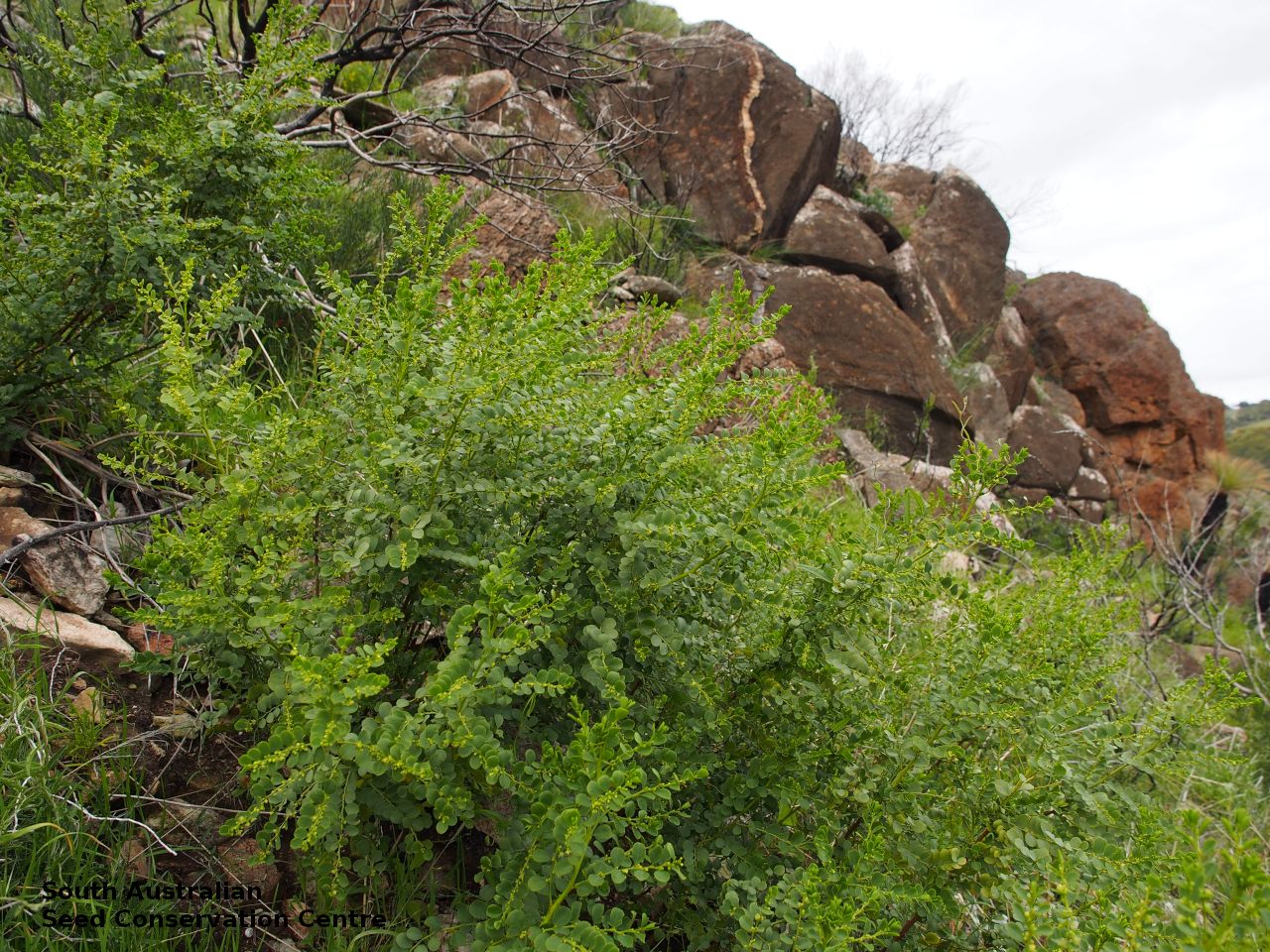
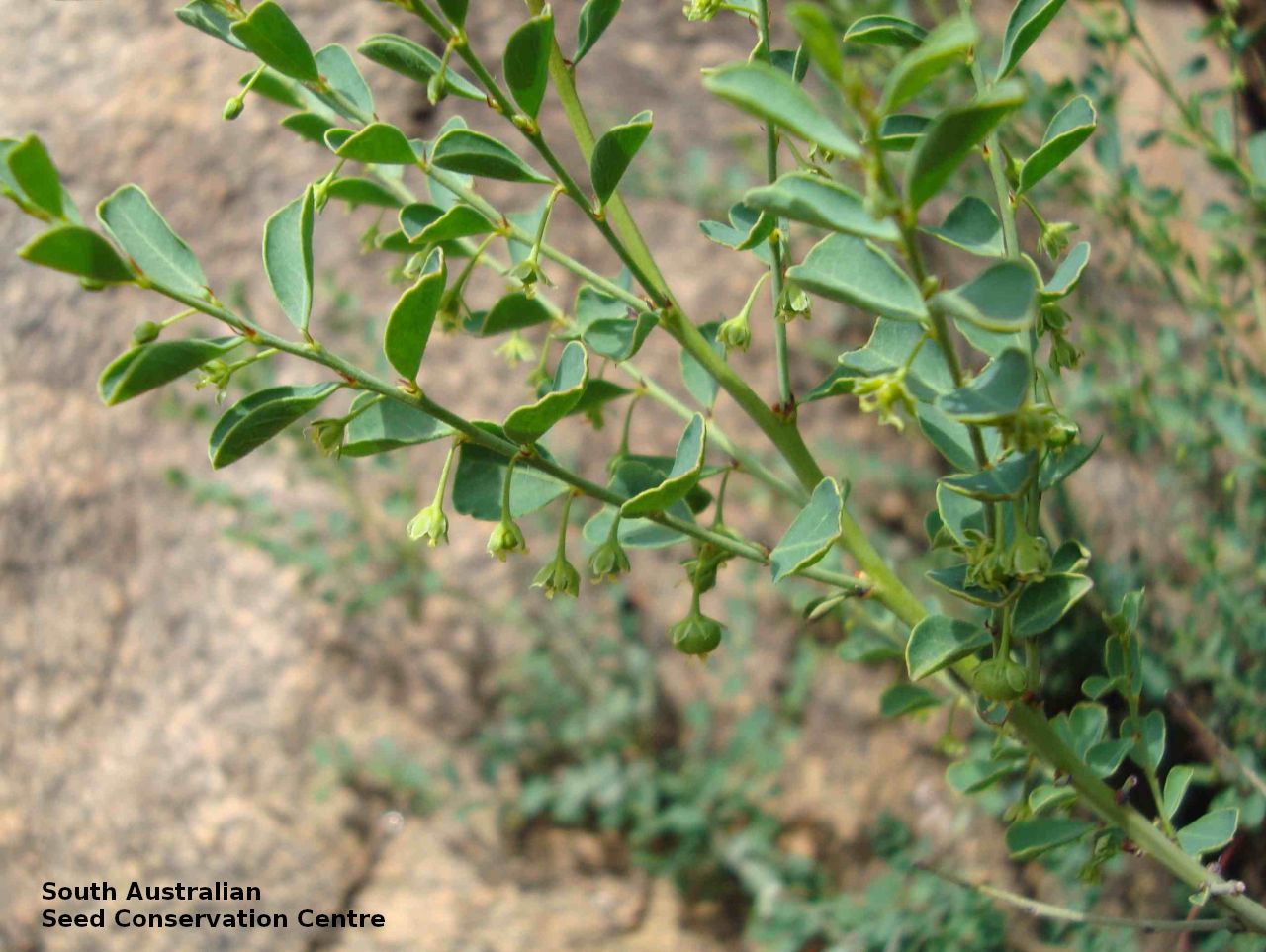
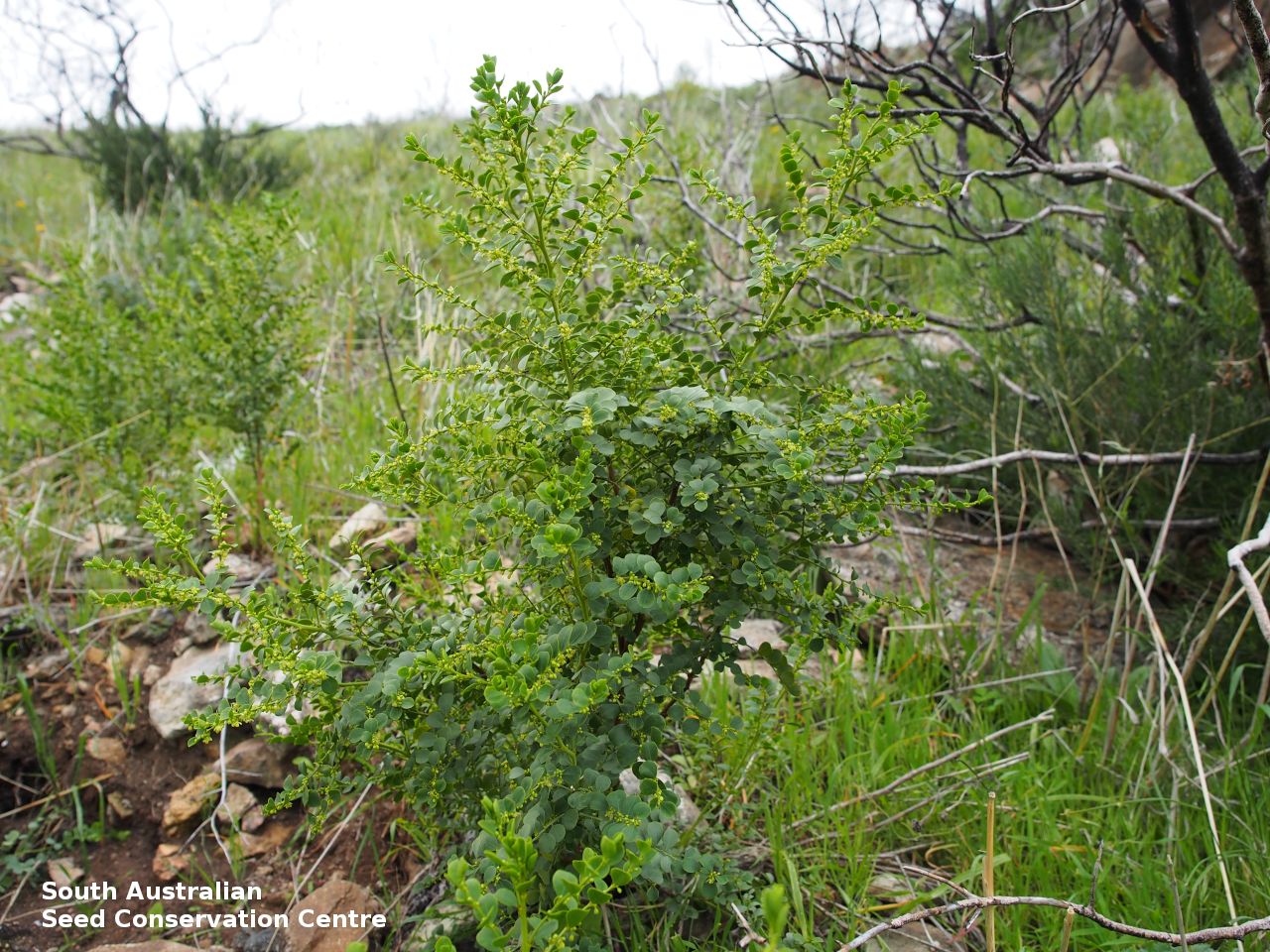
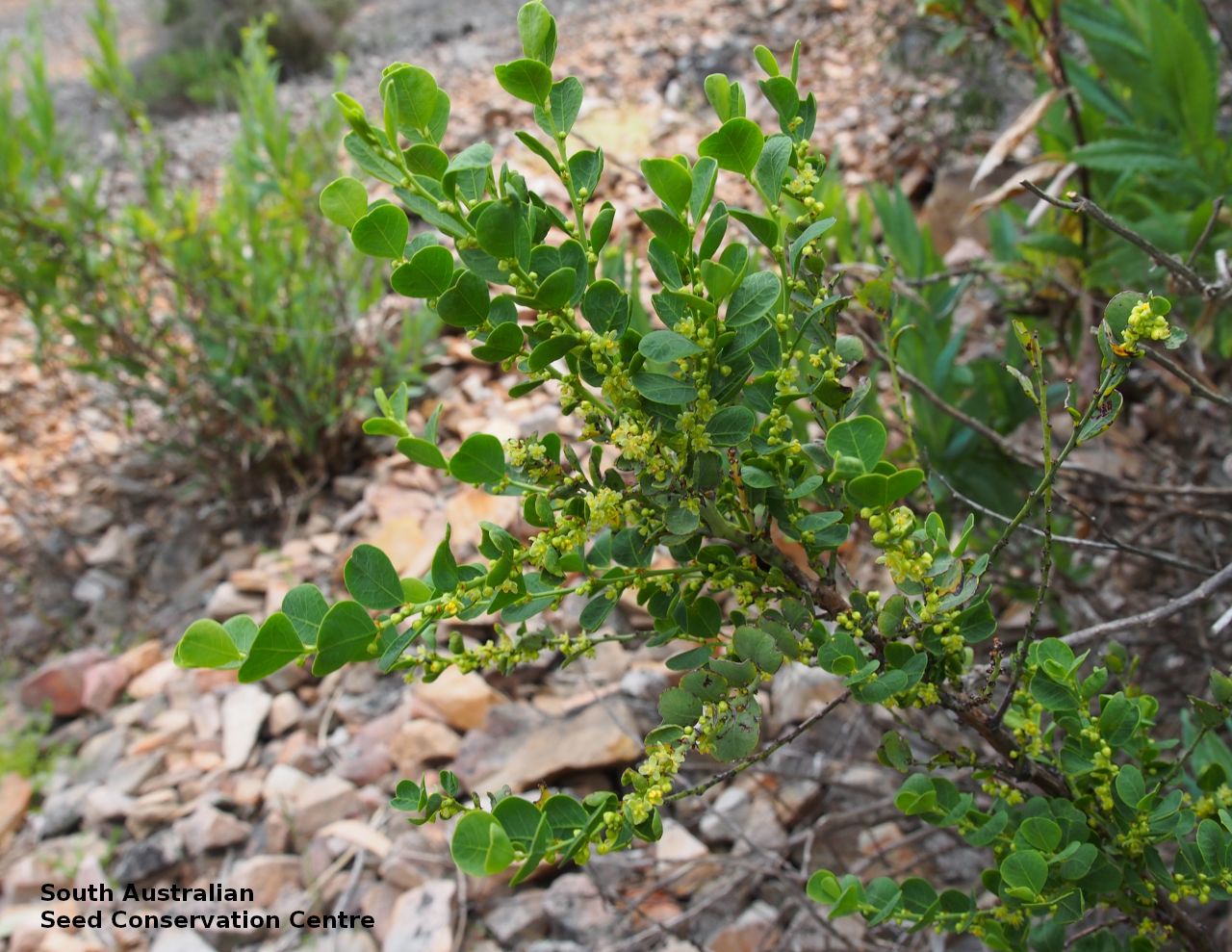
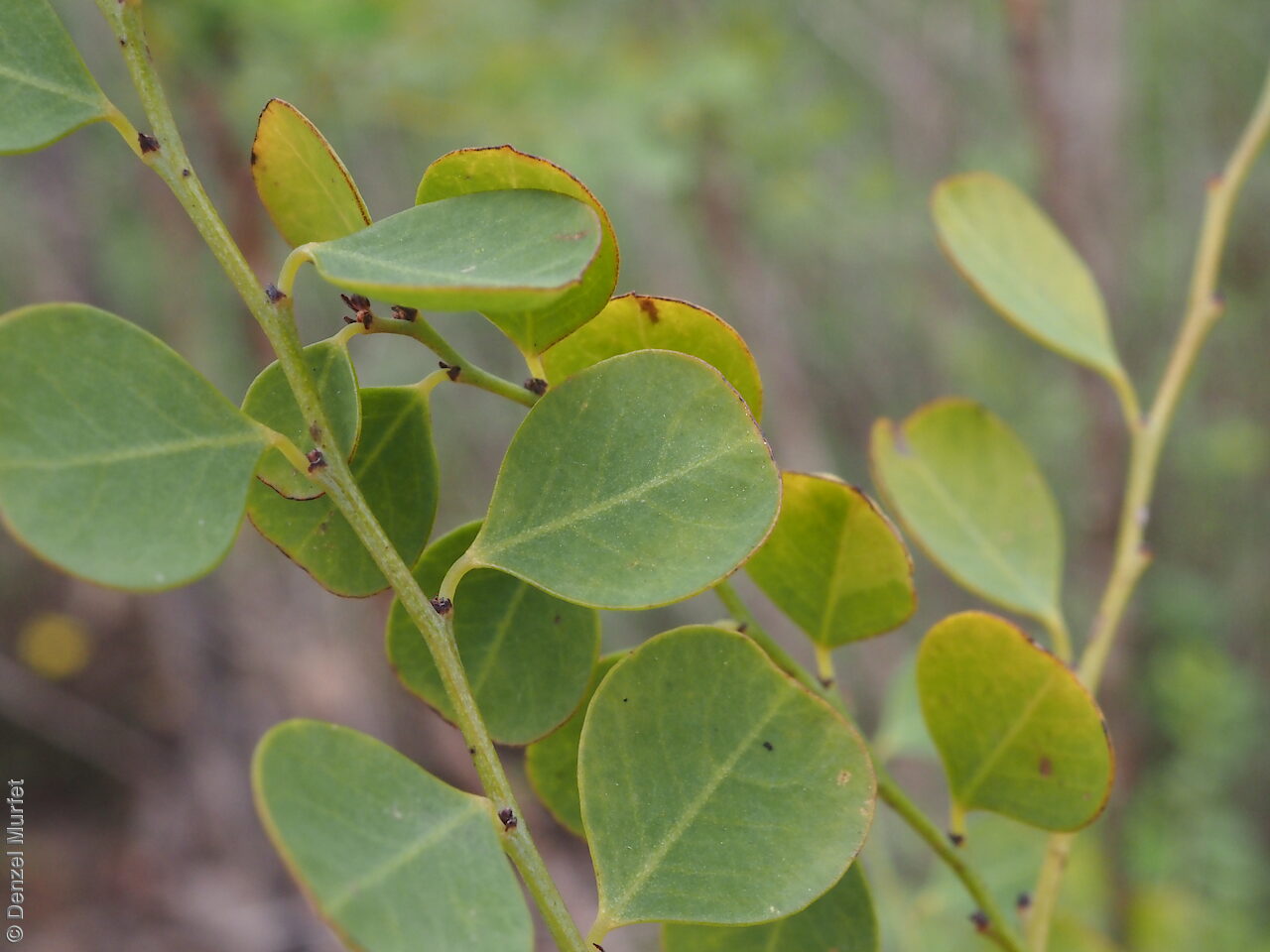
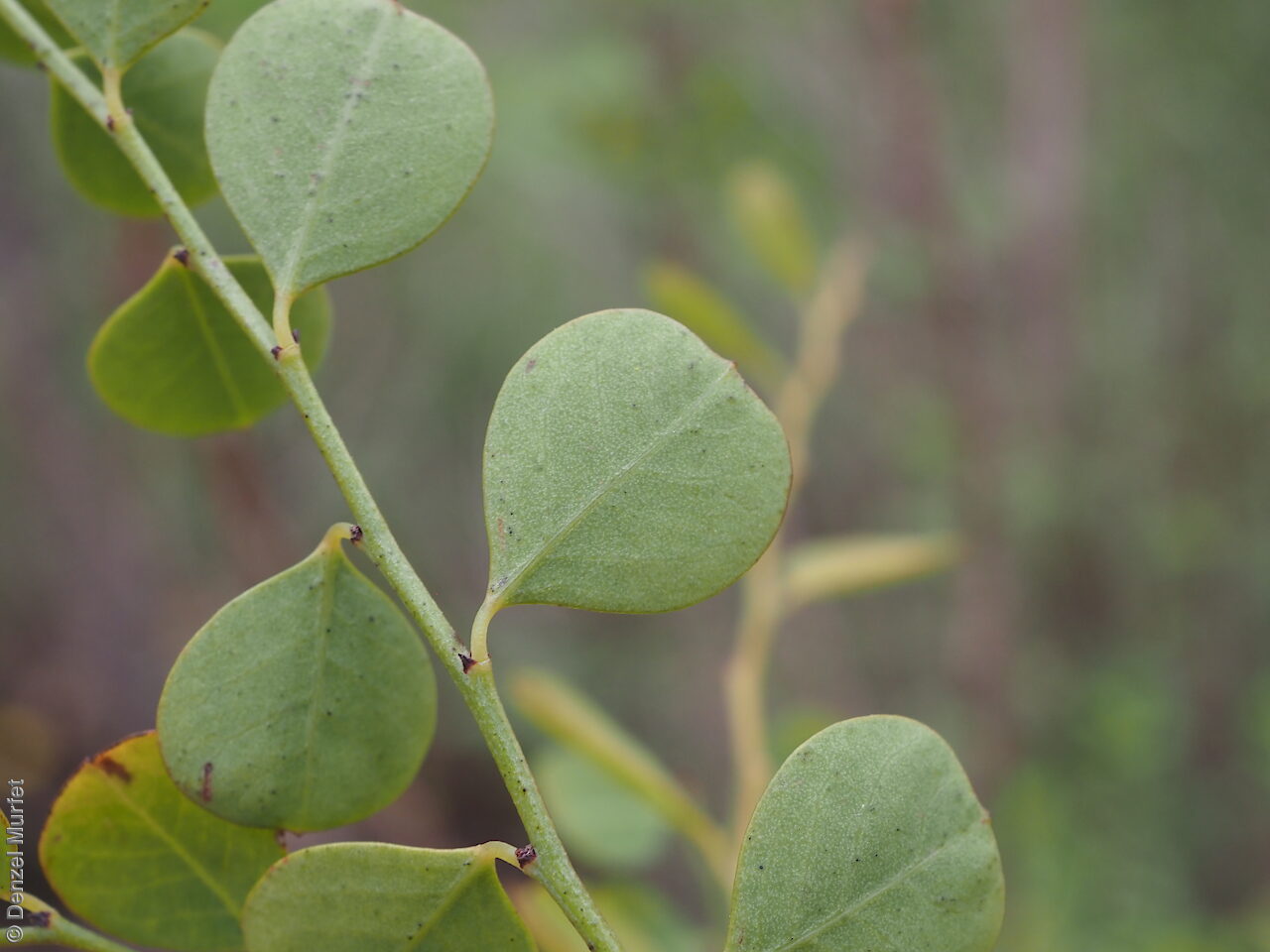
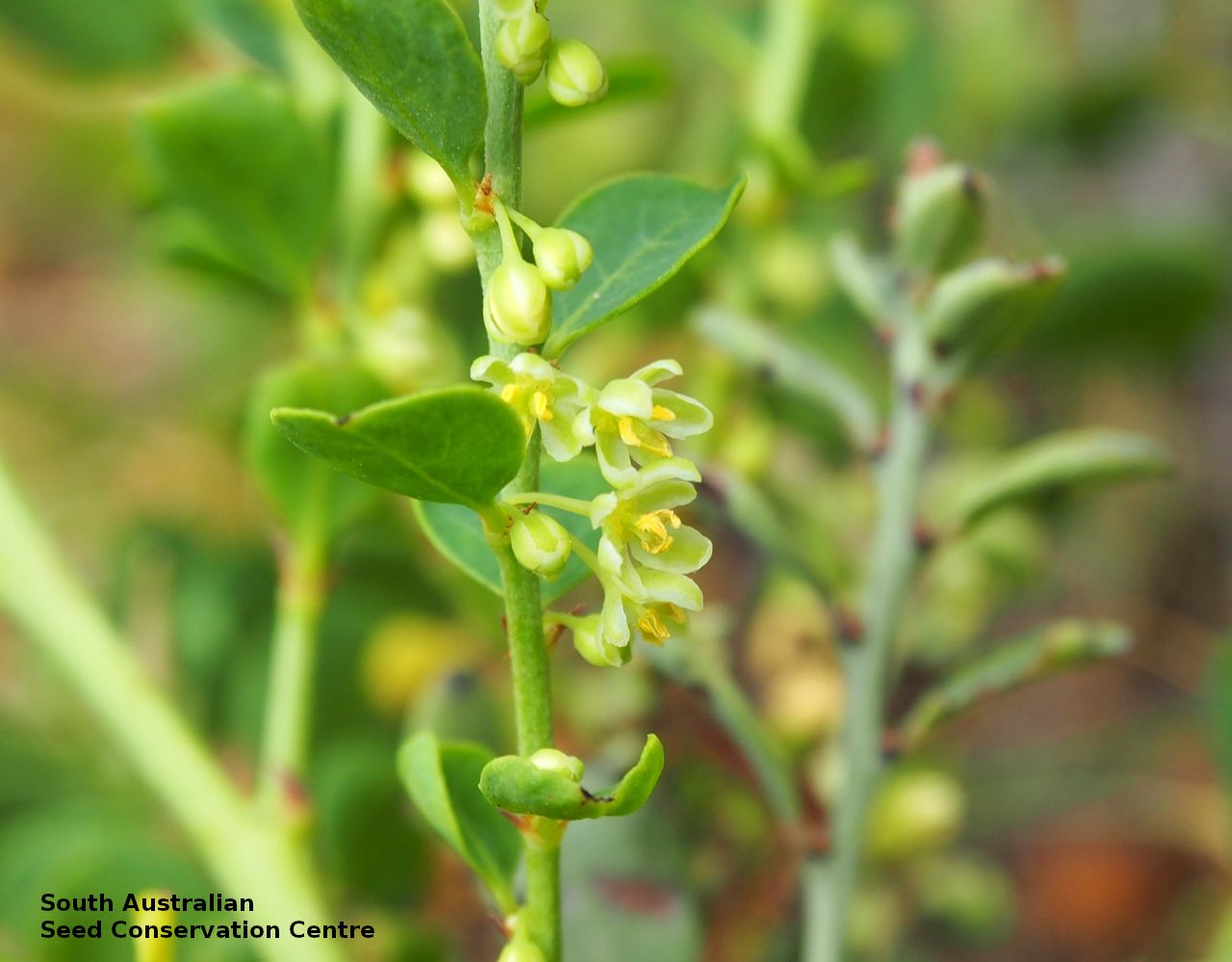
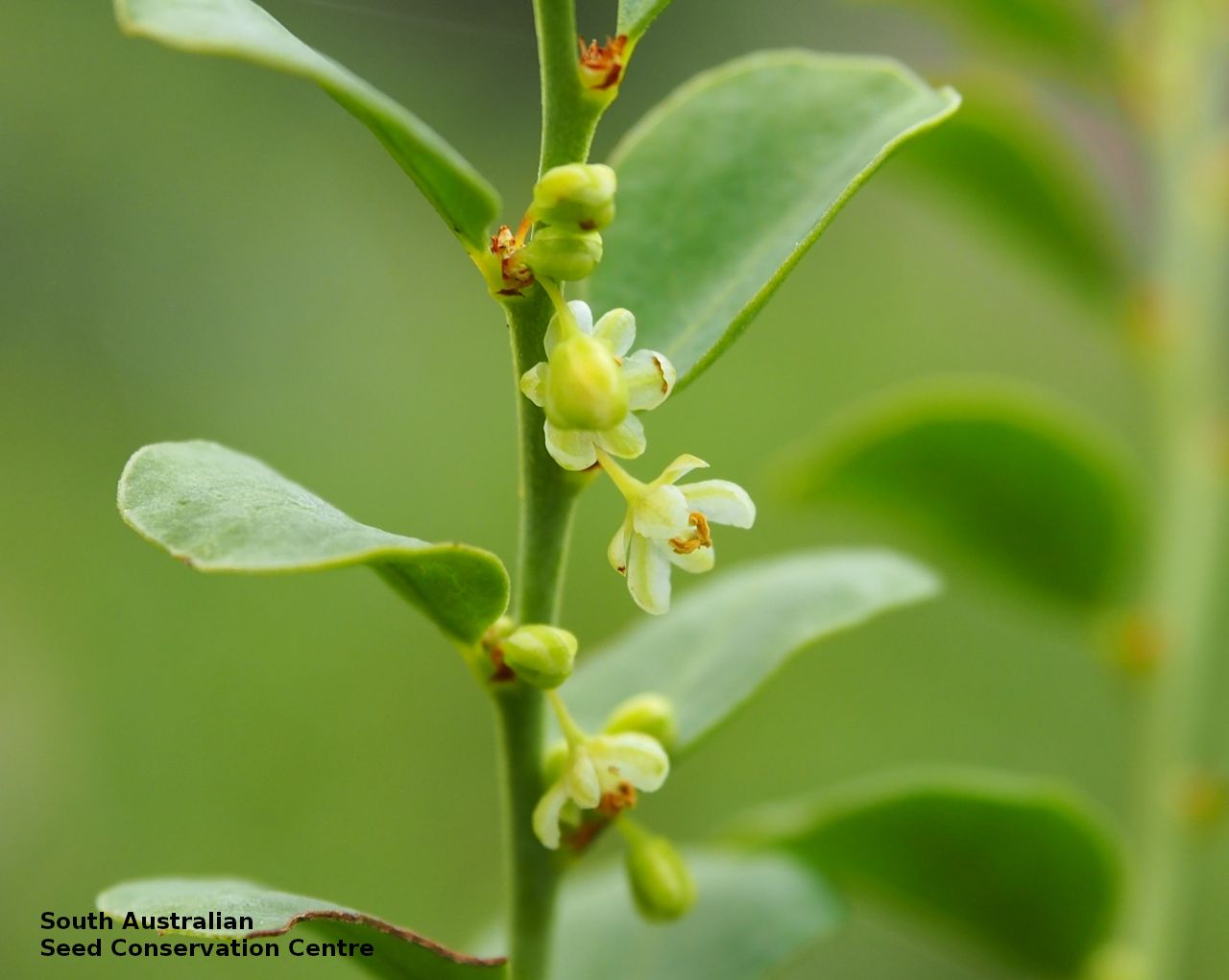
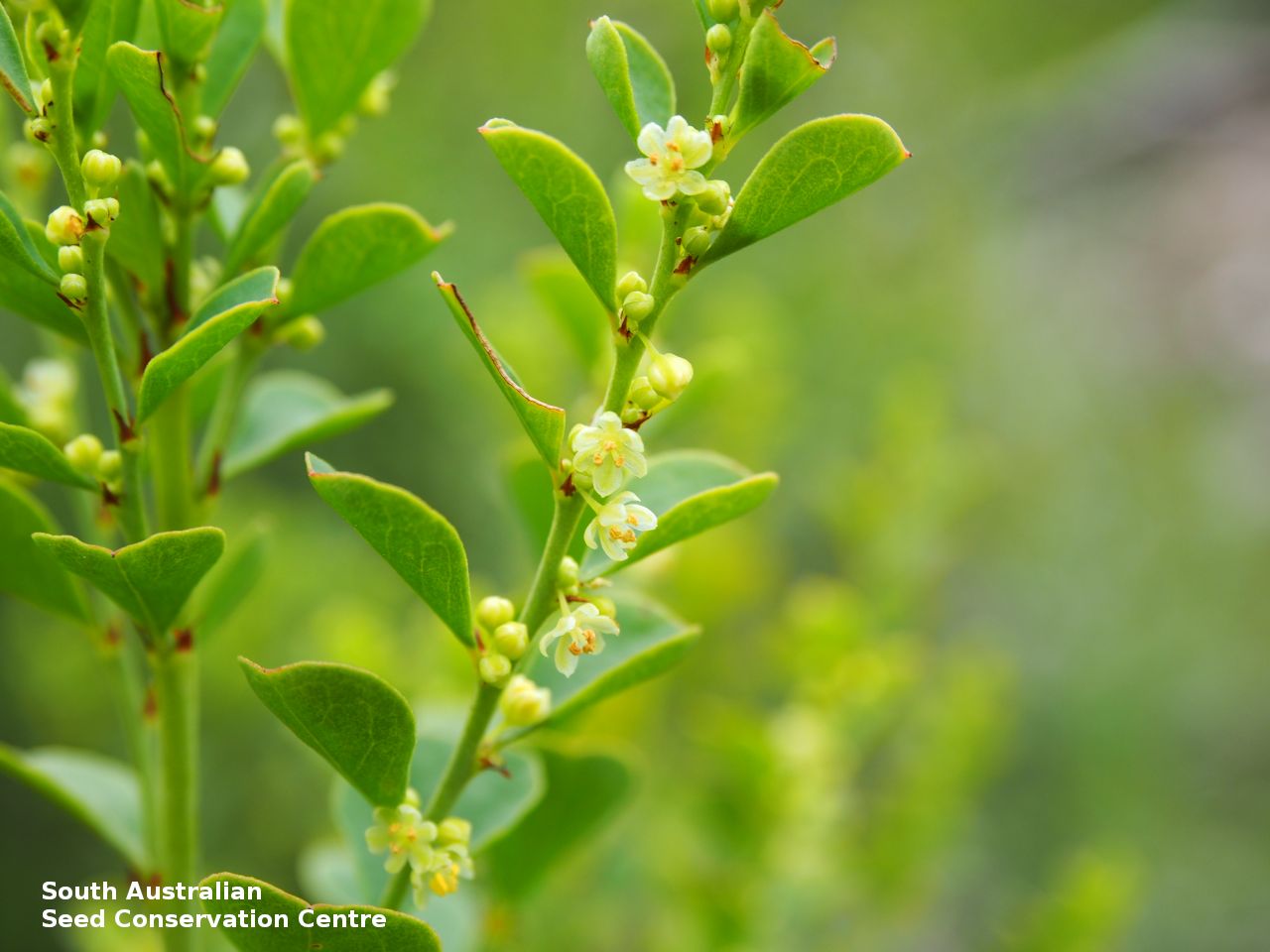
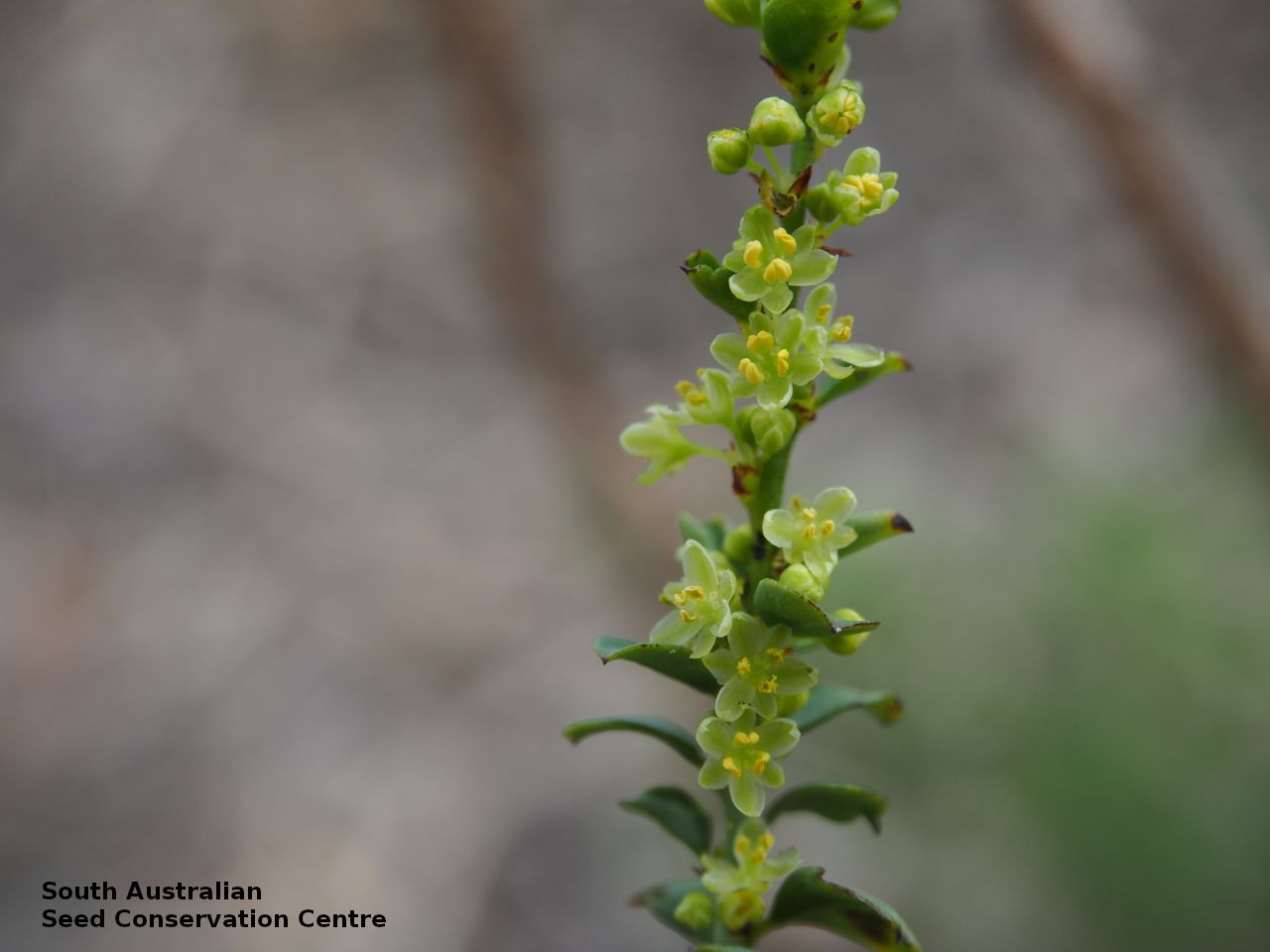

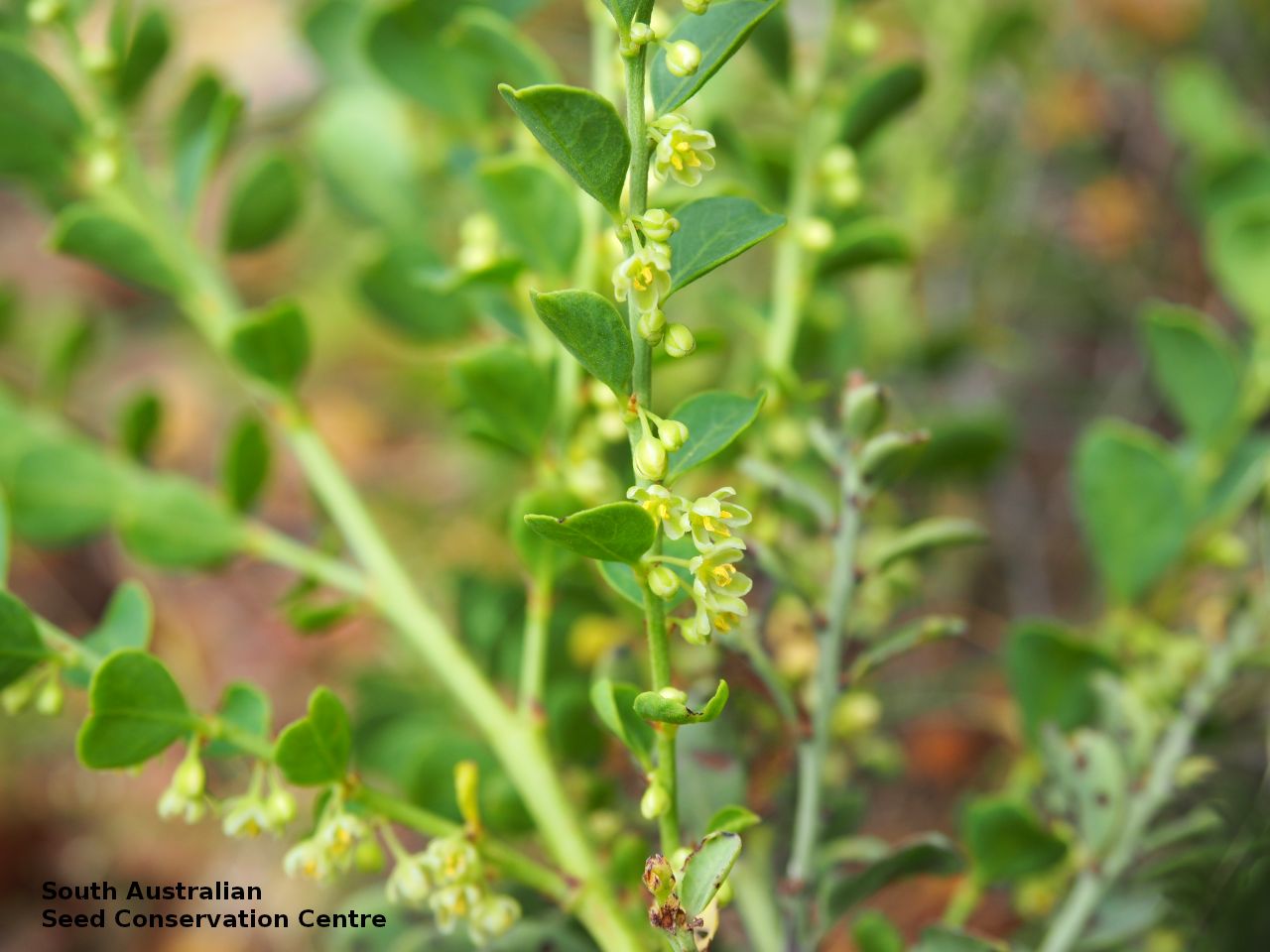
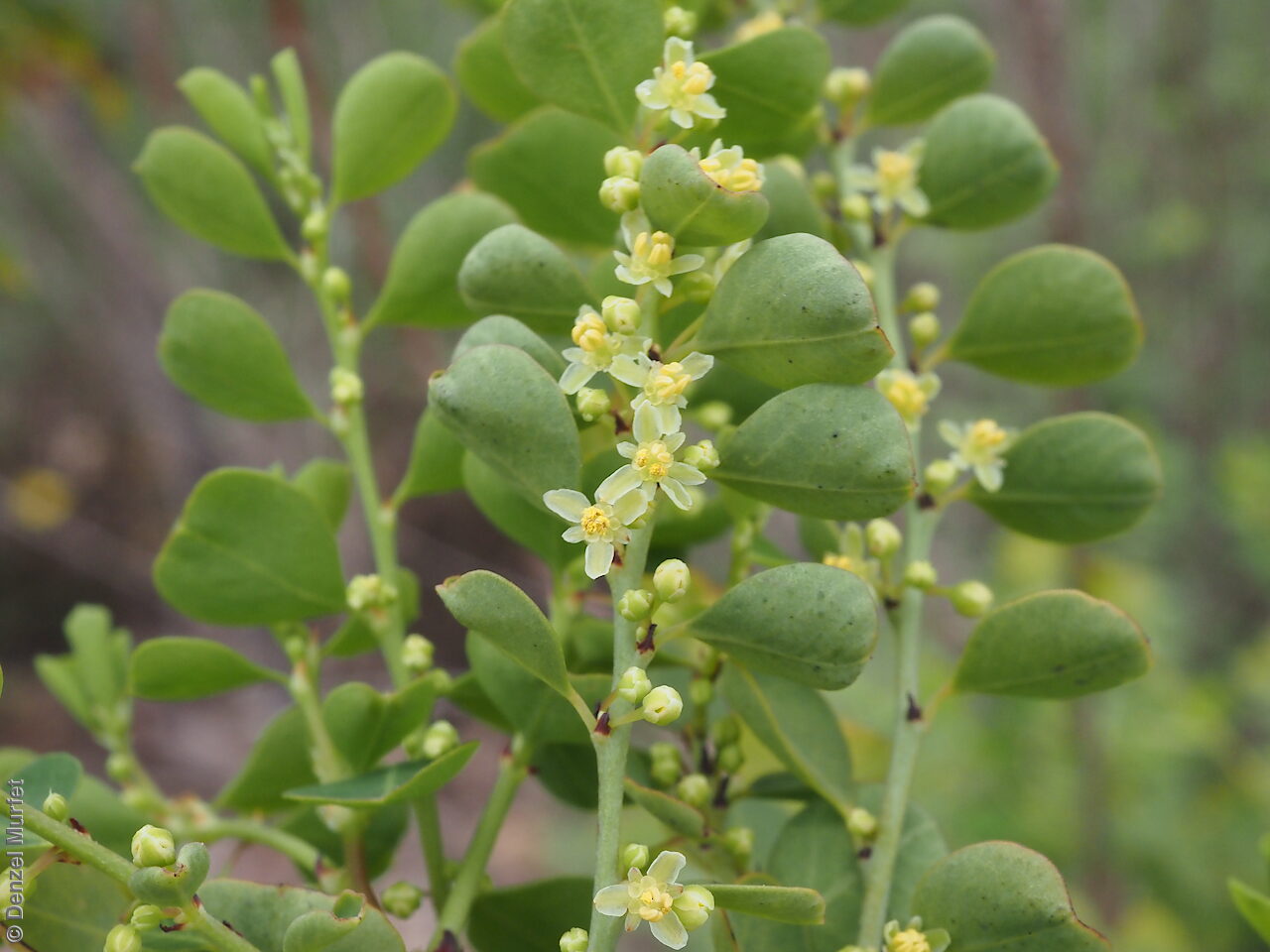
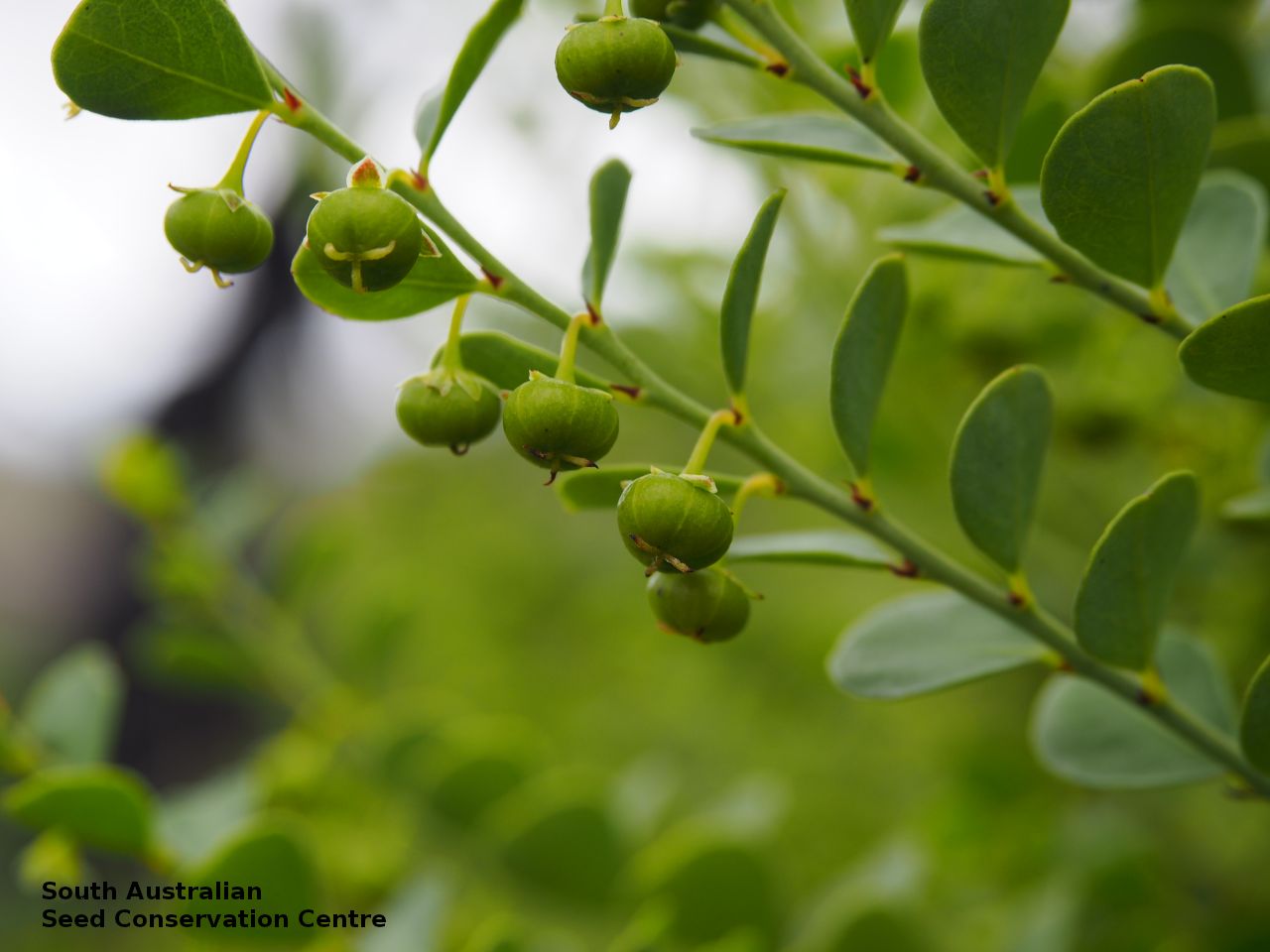
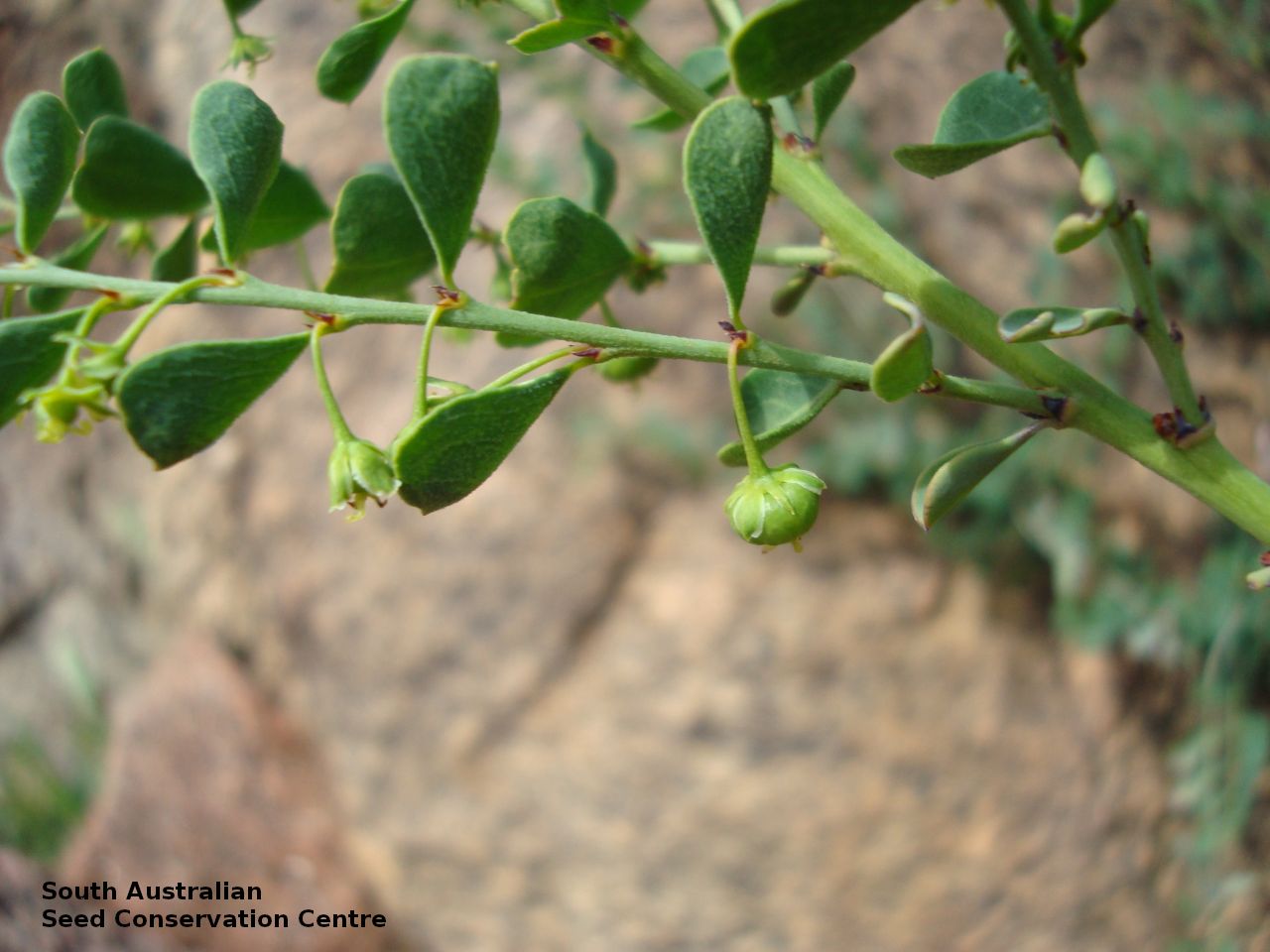
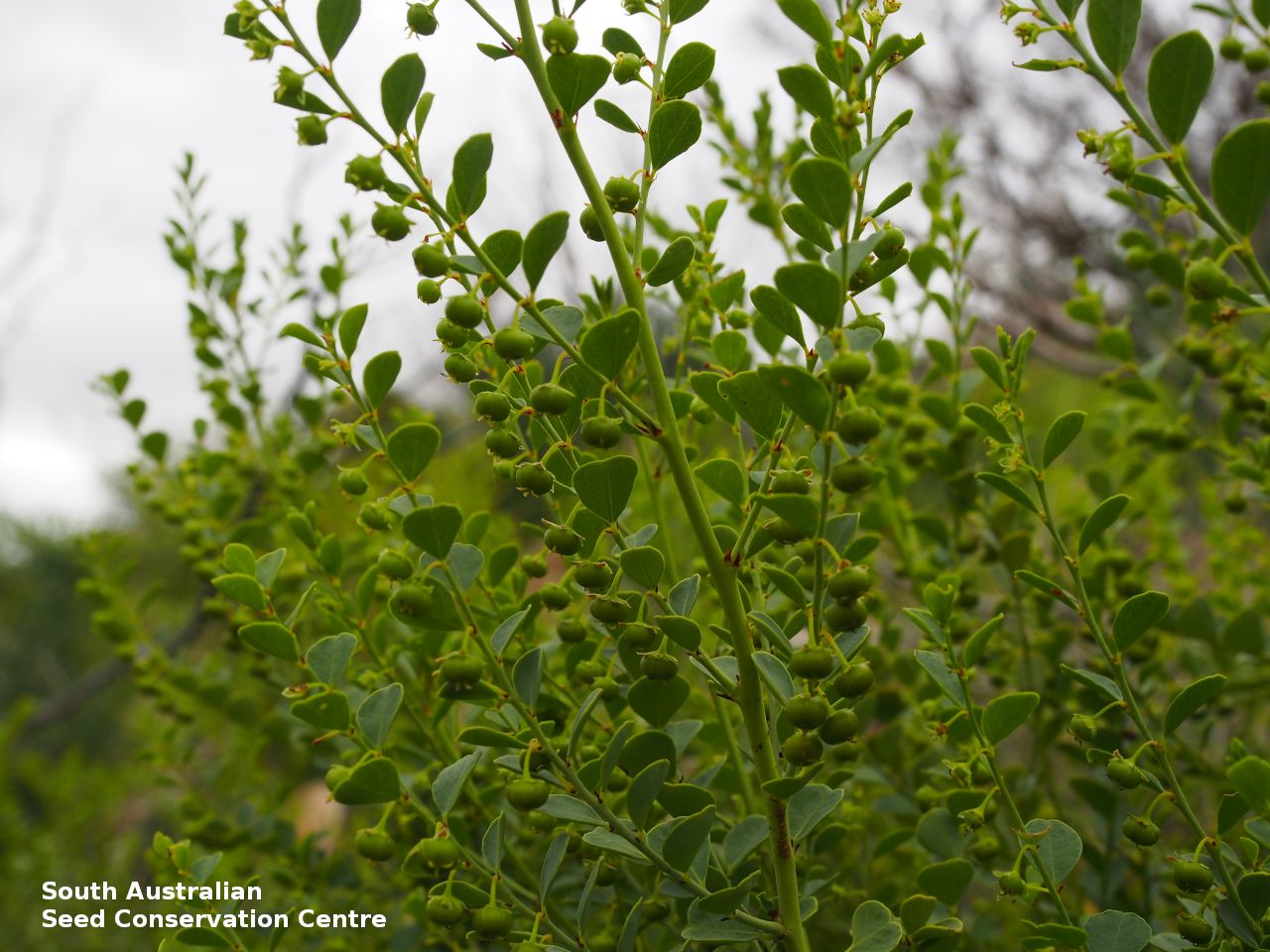
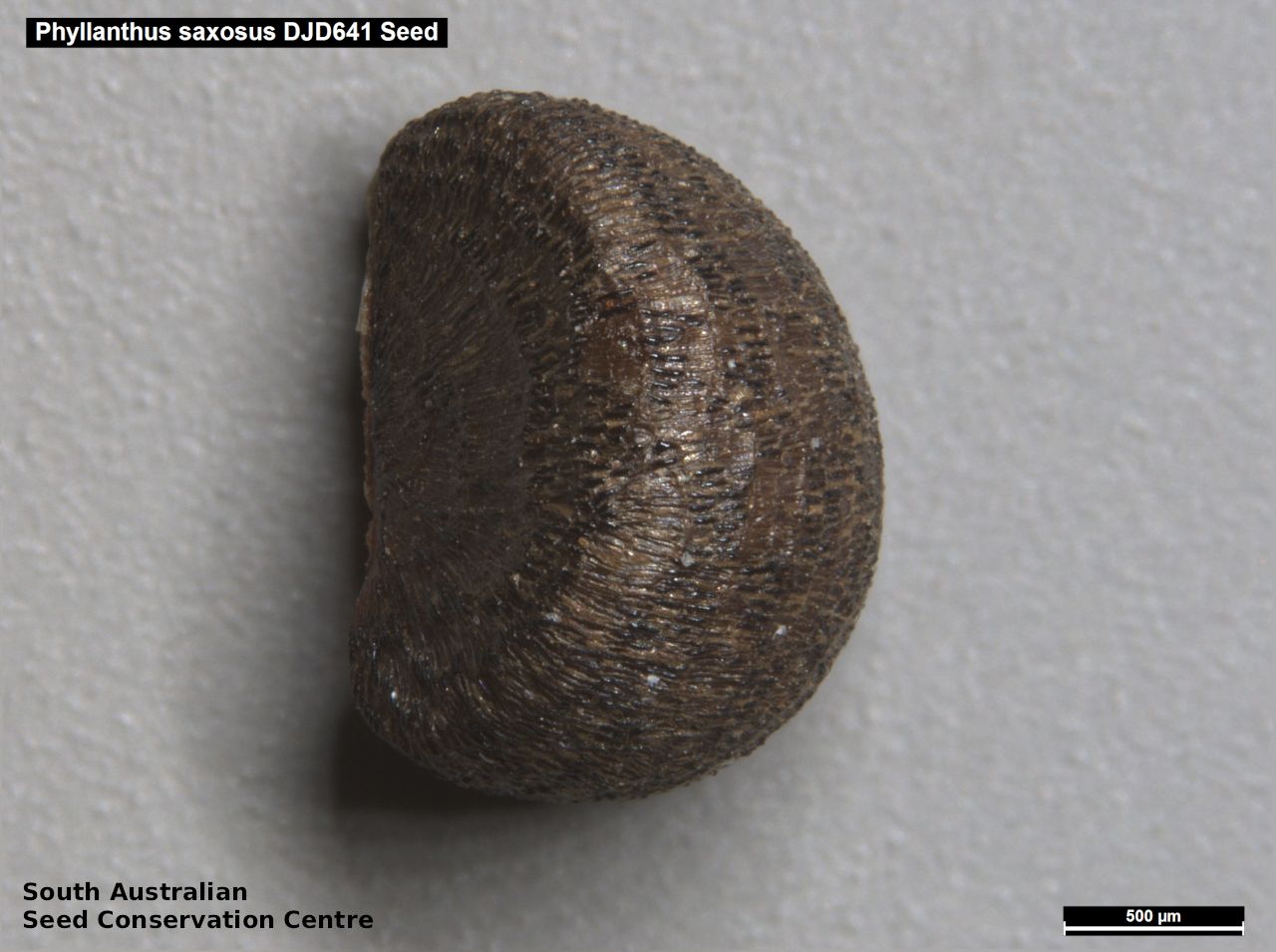
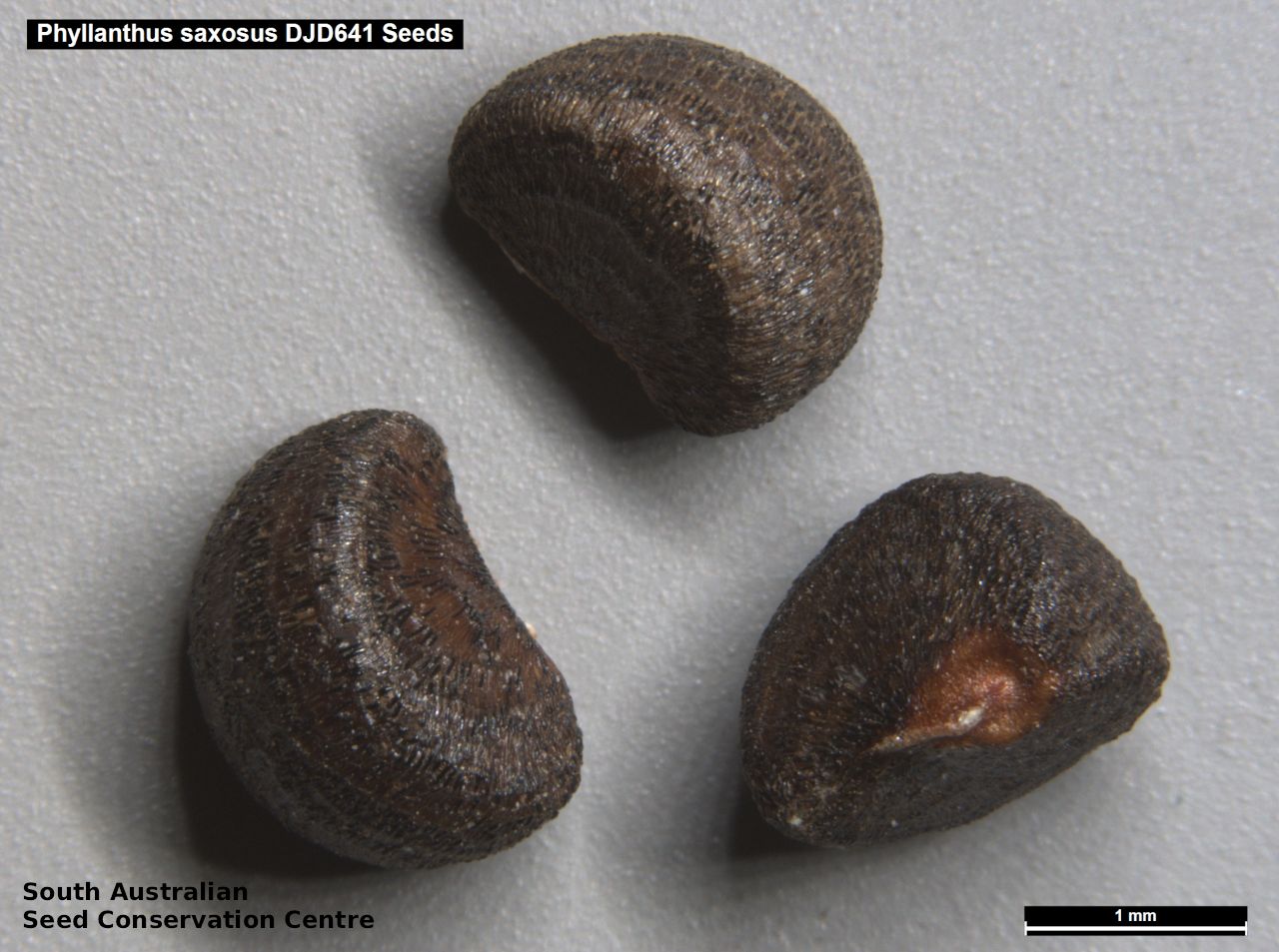
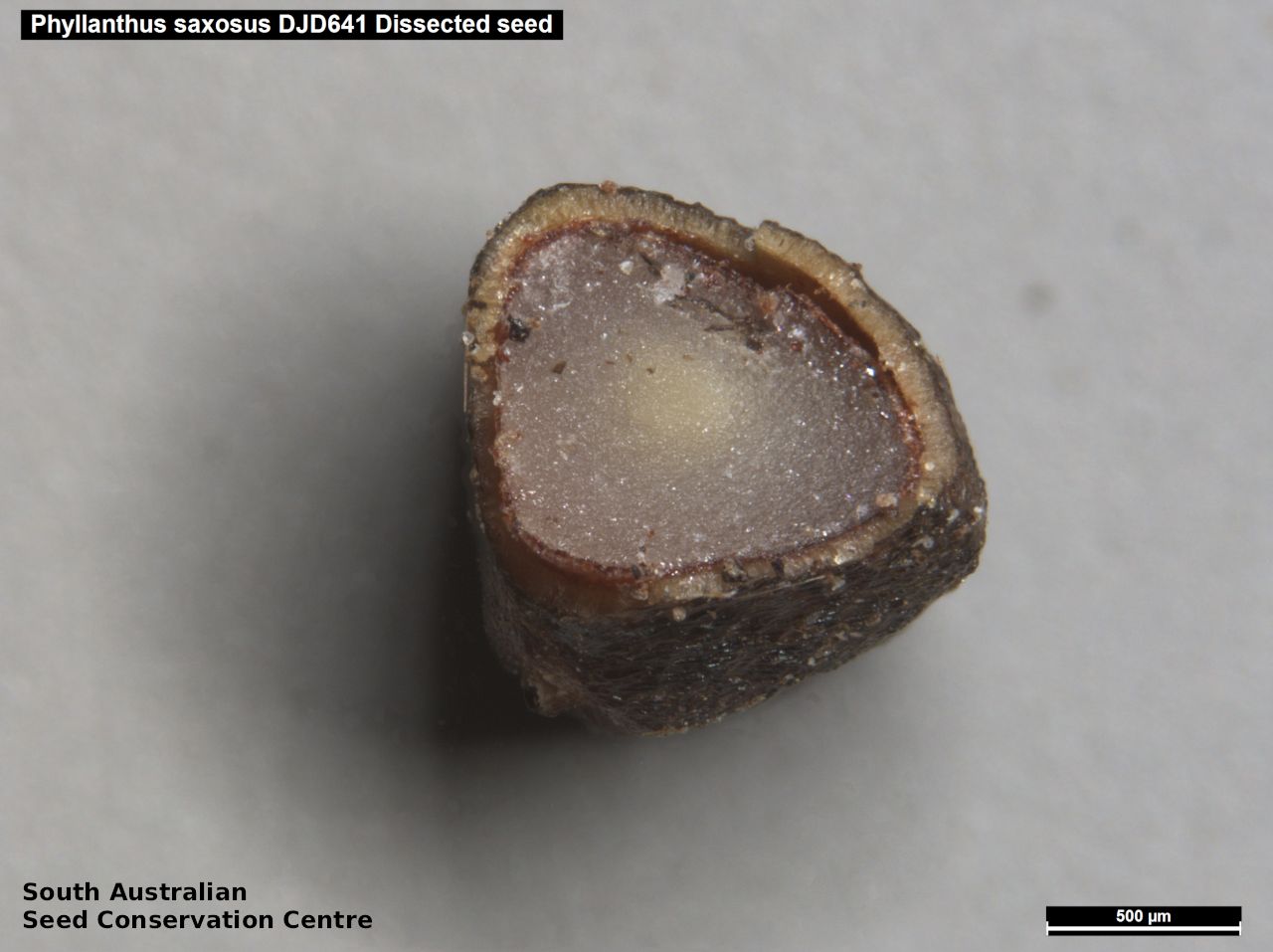
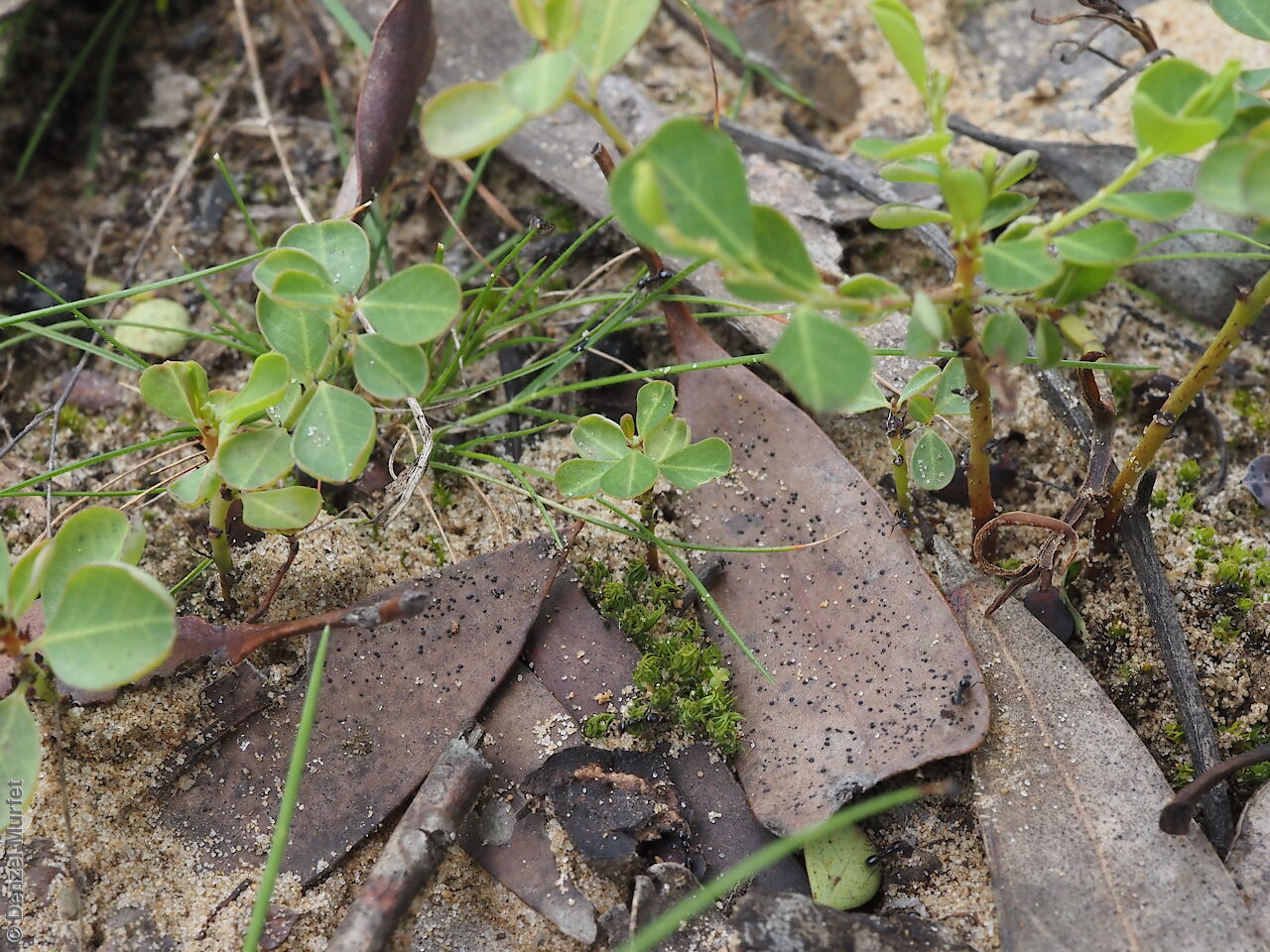


Botanical art
Prior names
Phyllanthus saxosus
Phyllanthus gunnii var. saxosus
Etymology
Phyllanthus from the Greek 'phyllon' meaning a leaf and 'anthos' meaning a flower; referring to some foreign species where the flowers grow on the edges of dilated leaf-like branchlets. Saxosus from Latin meaning full of rocks; referring to its habitat.
Distribution and status
Found in the Flinders Ranges, north-west Eyre Peninsula, Mount Lofty Ranges, Kangaroo Island and the upper South-east in South Australia, growing in rocky slopes. Also found in Western Australia and Victoria. Rare in South Australia. Very rare in the other states.
Herbarium regions: Gairdner-Torrens, Flinders Ranges, Eastern, Eyre Peninsula, Northern Lofty, Murray, Southern Lofty, Kangaroo Island, South Eastern, Green Adelaide
NRM regions: Adelaide and Mount Lofty Ranges, Eyre Peninsula, Kangaroo Island, South Australian Arid Lands, South Australian Murray-Darling Basin, South East
AVH map: SA distribution map (external link)
Plant description
Glabrous, dioecious shrub to 2 m high. Leaves alternate, in opposite pair, broadly obovate often somewhat oblique, to 15 mm long and 16 mm wide. Male inflorescence in axil with 2–10 yellow flowers. Female inflorescence solitary with green flowers. This species is very similar to Phyllanthus gunnii which does not occur in South Australia and differ by being constantly dioecious not monoecious , and distinctive pustulate (small blisters) appearance. Flowering between March and December. Fruits are brown depressed-globular capsule to 5 mm diameter, slightly 3-lobed, smooth or with inconspicuous furrows. Seeds are brown sectoroid seed to 2 mm long and 1.5 mm wide, with fine striation and black markings. Seed embryo type is spatulate fully developed.
Seed collection and propagation
Collect seeds between August and January. Collect individually or break off short fruiting stems with fat, brown capsules with hard dark seed. Slightly green capsules can be collected if the seeds are dark and hard. Place the capsules in a tray and leave to dry for one to two weeks. Then gently rub the capsules with a rubber bung to dislodge the seeds. Use a sieves to separate the unwanted material. Store the seeds with a desiccant such as dried silica beads or dry rice, in an air tight container in a cool and dry place. Seed viability can be variable and seeds. From one collection, the seed viability was high, at 85%.
| Location | No. of seeds (weight grams) | Number of plants | Date collected | Collection number Collection location | Date stored | % Viability | Storage temperature |
|---|---|---|---|---|---|---|---|
| BGA MSB | 4,300 (9.2 g) 4,300 (9.2 g) | 50+ | 1-Nov-2006 | DJD641 Northern Lofty | 1-Aug-2007 | 85% | -18°C |
Number of plants: This is the number of plants from which the seeds were collected.
Collection location: The Herbarium of South Australia's region name.
% Viability: Percentage of filled healthy seeds determined by a cut test or x-ray.